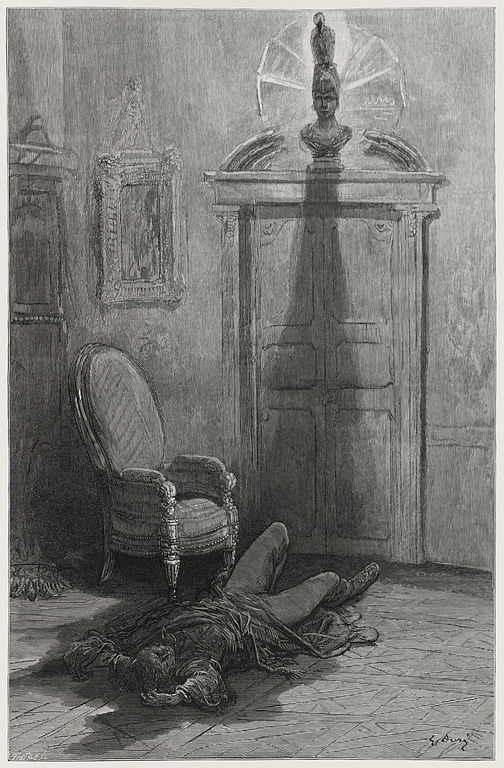Multi-faceted messenger of the gods. The Raven is a large bird with deep-black plumage. It can fly great distances on strong wings.
- Ravens are widely known as spies. You can use them as a way to give players the feeling of being watched.
- Ravens can play the role of an entertaining and interactive NPC. Try adding one as a familiar or messenger for an important NPC.
- These black birds are strongly associated with the death. Use them to foreshadow battlefields, character deaths, or interactions with the realm of the dead.
- A players wakes up one morning to find an unusually large, black bird perched on her windowsill. The old raven is named Cort and he brings a surprising message.
- As the party passes by the ancient cairn, they hear a croaking voice address them. It comes from a raven staring down at the them from the rocks. It delivers a warning from an old friend - a friend who is known to be deceased.
Raven Lore
The raven conjures thoughts of death; grim images of graveyards, battlefields, and the shadow land. Its dark silhouette invokes fear and is often considered an ill-omen. But, in fact, the raven used to be white. He belonged to the inner circle of the sun-god Apollo and was his trusted messenger. One day, Apollo asked Raven to spy on his lover Coronis. The raven witnessed Coronis breaking faith and reported this back to Apollo. In a rage, Apollo shot Coronis with one of his arrows. As she died, she revealed she was with child. Apollo managed to save the child but not Coronis. He punished the raven for the tragedy, banishing him from his protected circle and turning his plumage black forevermore.
The fact of the Raven's disgrace is repeated elsewhere. After a powerful god punished the world with a flood, a saviour named Noah shepherded the world's animals by boat across the deep water. After months, the sky began to clear and hope blossomed. To confirm whether the land was reappearing, Noah sent a raven to scout. The raven did not return for many days and so another bird was sent and a small ceremony held to honour the raven's courage. The other bird returned with joyous news: plants and trees grew on the land once more! But afterwards, the raven returned as well. Surprised, Noah asked what had happened and the raven shamefully admitted it had been feasting on the corpses it found strewn across the newly exposed earth. As a carrion-eater, it could not help itself. To punish him, Noah turned the raven's feathers black.
Characteristics of the raven
Reflecting on these two stories what do we learn? We can discover its physical characteristics. The raven is strong enough to fly great distances and it's plumage is a deep black, the sort that seems a curse.
The raven is intelligent, trainable, and may develop complex relationships with other species. It is a popular choice as a familiar. (As a side note, if you are thinking of trying this yourself you should know that they are susceptible to flattery.)
In addition, it must have a clear voice for communication and a keen eye for observation. In these stories it is employed as a messenger and scout. It is known that the ravens named Thought and Memory were the faithful spies and messengers of Odin the All-Father.
The raven is a carrion-eater – it consumes the dead. It always begins by devouring the eyes and brain as if it directly attacks the wisdom and prudence of men. This may be its main connection to death and the afterlife, though some have reported that the raven can actually travel to the realms of the dead and back freely.
Justice for the Raven
We should also consider that the raven may be misunderstood. Is its blackness a manifestation of its nature or is it a reflection of the gods and prophets casting judgement upon it? In the story of Apollo, the raven served faithfully albeit without tact. In the story of Noah, the raven acted according to its nature as all animals must.
There is a famous poem that recounts a man's descent into madness as he casts his anxieties upon a raven. The raven is surely an ominous portent whose shadowy silhouette inspires fear. But does it really mock the man or does the man doom himself?
This image depicts the final scene in which the man succumbs to madness.

"And the Raven, never flitting, still is sitting, still is sitting
On the pallid bust of Pallas just above my chamber door;
And his eyes have all the seeming of a demon’s that is dreaming,
And the lamp-light o’er him streaming throws his shadow on the floor;
And my soul from out that shadow that lies floating on the floor
Shall be lifted—nevermore!"
Written by Giles Ravensong.
